
"Gloomy and Wenzai-Exhibition of Fine Jade Artifacts from the Western Zhou and Jin Kingdoms" recently opened in Liangzhu Museum, exhibiting more than 170 pieces (groups) of exquisite cultural relics, mainly jade, supplemented by a small amount of bronzes and golds. Jade artifacts were unearthed from Hou's cemetery.
Xu Tianjin, one of the main excavators of the Jinhou cemetery, professor of the School of Archeology and Museology of Peking University and director of the Liangzhu Museum (Liangzhu Research Institute), said in an interview with The Paper yesterday that the discovery and excavation of the Jinhou cemetery is the first step in Chinese archaeology. One of the most important achievements, among which the complete assemblage and rich types of jade are the most important and eye-catching part of this archaeological achievement. It is hoped that through the display of Jin jade, we can see the big from the small, and present the The overall appearance of the jade culture of the Western Zhou Dynasty also interprets the ritual and music civilization of the Western Zhou Dynasty characterized by "wen" from another angle.
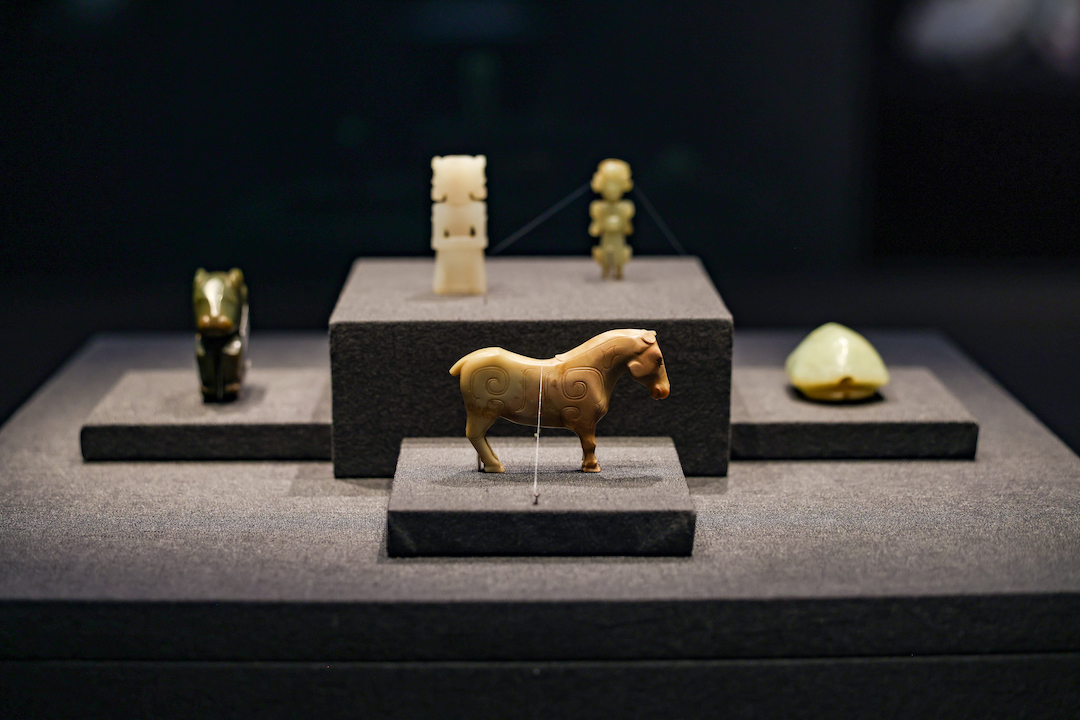
Exhibition Site Jade Components
The Paper: As the curator of "Glory and Wenzai—Exhibition of Jade Artifacts from the Jin Dynasty in the Western Zhou Dynasty", please talk about the origin of this exhibition and the connotation you want to convey in the name of the exhibition you selected?
Xu Tianjin: As early as more than 10 years ago, Liangzhu Museum planned to conduct exhibitions and research on Chinese jade culture. The seventh annual meeting of the China Jade Culture Center was held simultaneously with the exhibition, focusing on the comparative study of "Liangzhu Jade Culture" and "Western Zhou Dynasty Jade Culture". At that time, Mr. Zhang Zhongpei proposed the establishment of the Chinese Jade Culture Center, because jade is the most important representative artifact of the Liangzhu Culture and the most important archaeological evidence of the Liangzhu Civilization. Liangzhu culture unearthed a large number of jade articles related to politics, religion and sacrifice, representing power and belief. In the past, it has successively done exhibitions and researches on the jade culture of Hongshan Culture, Lingjiatan Culture, Xia Dynasty and Eastern Zhou Dynasty. The annual meeting of the Chinese Jade Culture Center originally planned to make a series of exhibitions according to the development of the Chinese Jade Culture, and this exhibition is an important part of the series.

exhibition site
The title of the exhibition "Depressed and Wenzai" comes from a famous saying in Confucius's "The Analects of Confucius·Bayi", "Zhou Jian was in the second generation, Yuyu is Wenzai, I follow Zhou." The second generation is so rich and colorful. I follow the system of the Zhou Dynasty." This is not only a kind of praise from Confucius for the etiquette system of the Western Zhou Dynasty, but it can also better reflect the characteristics of this batch of cultural relics when used in this exhibition.

Xiguan M10: 36 Malachite tablet decorated with jade stele, Shanxi Provincial Institute of Archeology (Shanxi Archaeological Museum)
"Yuyuhu" has both strong and warm connotations as well as rich and varied meanings. "Wen" is an etiquette system, and it is also a part of a large culture. It fits well with the exquisite patterns of jade wares in this exhibition. It can also reflect the overall artistic outlook of Western Zhou jade wares. One of the characteristics of Zhou culture is "gentleness and gentleness", so we can indeed feel the relationship between culture and quality from the utensils, so I used such a title to highlight the theme, and hope that the audience can feel the etiquette system of the Zhou Dynasty , aesthetic taste, etc.

Hengshui M2158: 26 Jade Plaque Decoration Collection of Shanxi Provincial Institute of Archeology (Shanxi Archaeological Museum)
The Paper: Why does this exhibition focus on the jade artifacts unearthed from the cemetery of the Marquis of Jin in the Western Zhou Dynasty? You participated in the excavation of the Tianma site in Qucun. What are the characteristics of the jade artifacts unearthed at the site, and what characteristics of the Western Zhou jade culture can be reflected?
Xu Tianjin: The discovery and excavation of the Jinhou cemetery is one of the most important achievements of Chinese archaeology. The most important and eye-catching part of this archaeological achievement is the complete assemblage, rich types of utensils (functions), well-made, and a wide variety of jade wares. First of all, the jade archaeological materials discovered in the Jin Dynasty in the Western Zhou Dynasty should be the most abundant among other sites of the same period. In comparison, it is also the most complete in terms of age. The time span spans from the early Western Zhou Dynasty to the Spring and Autumn and Warring States. archaeological material spanning ages. The second is the integrity of the tomb level. The so-called integrity of the tomb level is from the king and wife of Jin to the small and medium-sized nobles and commoners. The tombs of different periods and levels are relatively complete. Therefore, jade is the most important content of burial objects and is relatively preserved. is also better.
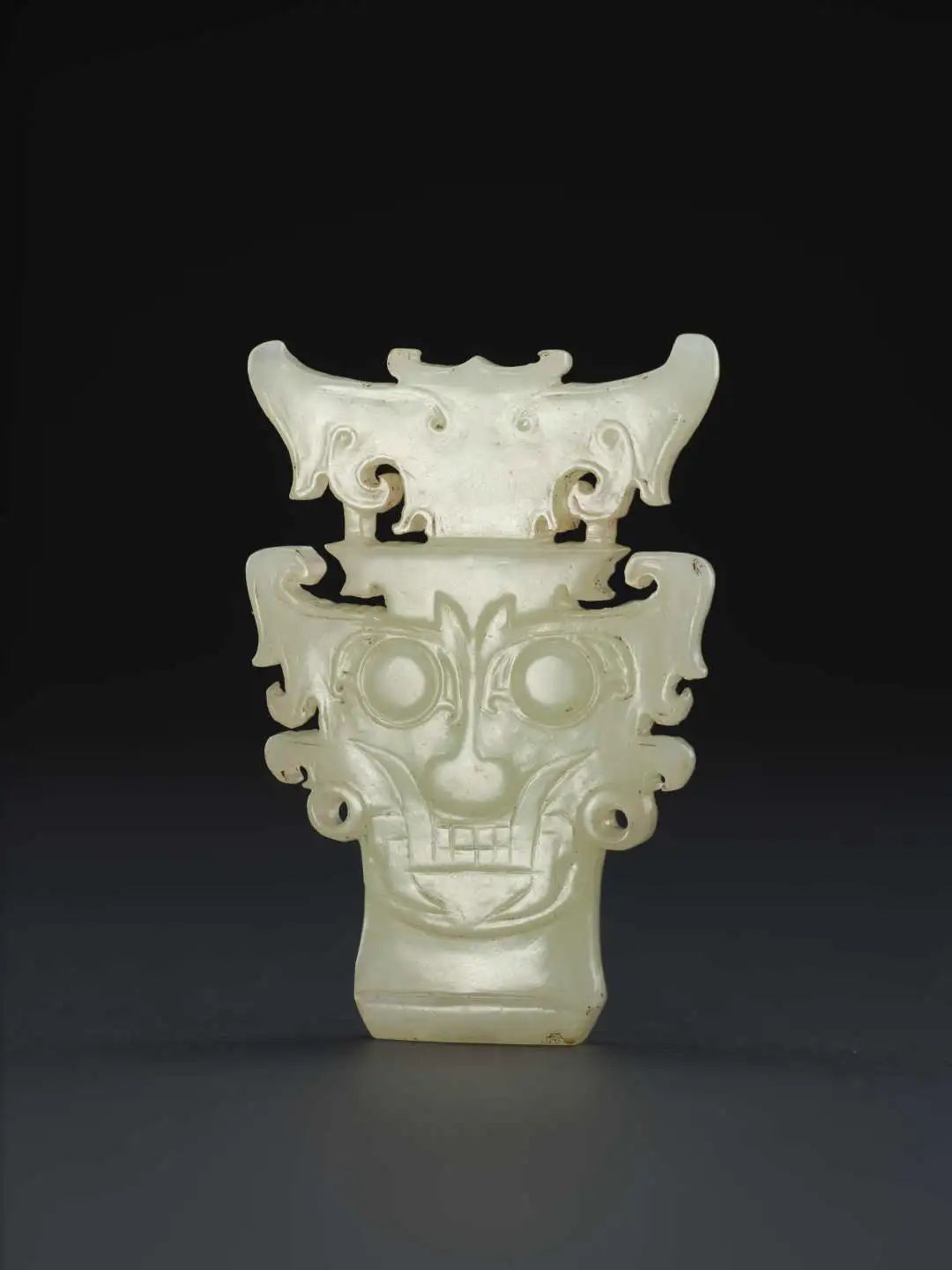
Sheep Tongue M1: 88 Jade God Face, Shanxi Provincial Institute of Archaeology (Shanxi Archaeological Museum)
Other sites of the same period have been found in Zhouyuan and Fenghao, but they were all seriously damaged, and there are relatively few complete large-scale tombs. Of course, there are also some vassal states that overlap with the cemetery of the Jin State in the age, and there are also very important discoveries. For example, the cemetery of Guo State in Sanmenxia from the late Western Zhou Dynasty to the early Spring and Autumn Period; and the cemetery of Rui State in Liangdai Village, Hancheng, Shaanxi, also unearthed very exquisite jade wares, but in terms of overall integrity, Jin State jade wares may be the most unearthed and most diverse. The richest and most well-preserved ones, from the perspective of displaying the jade culture of the Western Zhou Dynasty, Jin State jade can be said to be the best archaeological sample so far.

Sheep Tongue M1:3 Jade Panlong Collection of Shanxi Provincial Institute of Archaeology (Shanxi Archaeological Museum)
Compared with the jade wares of the Shang Dynasty or the Eastern Zhou Dynasty, some scholars commented that the ancient Chinese jade culture has gone through thousands of years of development and reached a peak in the Western Zhou Dynasty. It is true that the Hongshan Culture or Liangzhu Culture jades reached a peak in the Neolithic Age, but they have not reached such a level as in the Western Zhou Dynasty. This is mainly reflected in two aspects, one is in the aspect of "ritual", jade Culture is one of the important symbols of the ritual and music system of the Western Zhou Dynasty. There are a large number of records in the literature, and a large number of jade articles were used in different rituals and sacrificial activities; another aspect is the "vulgar" aspect, such as various daily jade ornaments gradually into the mainstream. Among the jade pendants, the jade pendants of the Western Zhou Dynasty are unique among the jade pendants of the past dynasties. The richness of jade colors and exquisite production are particularly well reflected here. In addition, there is the burial jade system, which is based on certain beliefs and specially made burial jade articles for the preservation of corpses or other purposes, such as jade pendants, jade plugs, jade handles, embellished jade covers, jade clothes and jade toes. Some scholars also believe that the tradition of the gold-threaded jade clothes worn by the tomb owners of kings discovered after the Han Dynasty may be traced back to the Western Zhou Dynasty.
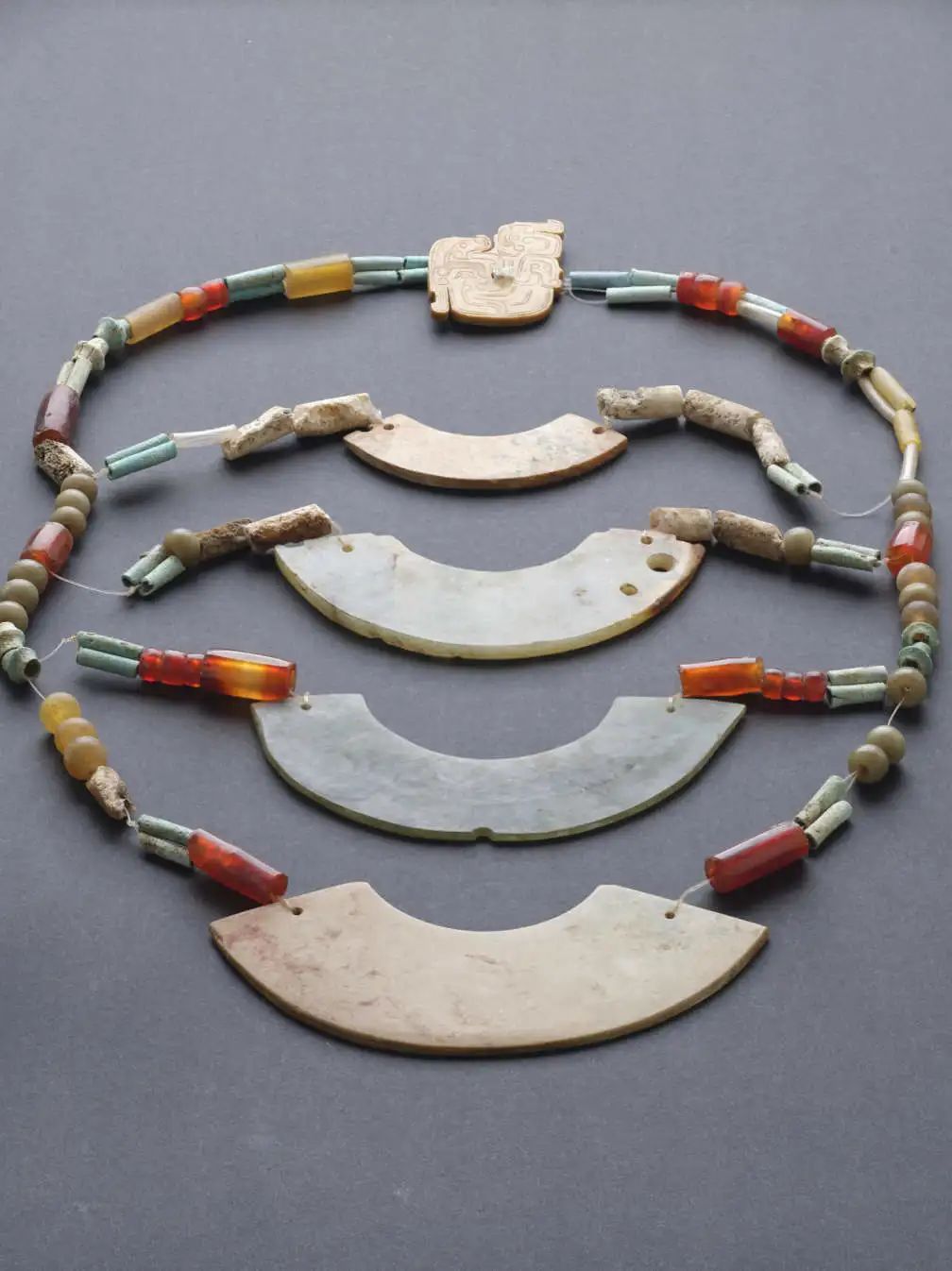
Four couplets of Huangyu
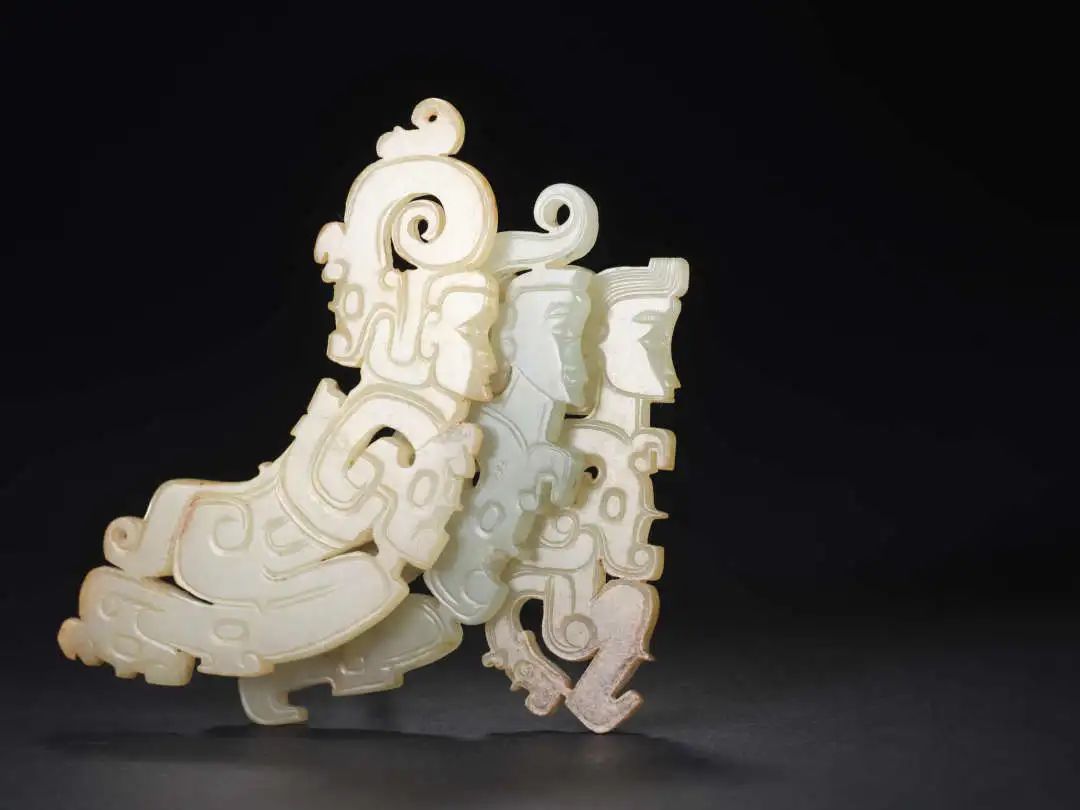
Jade Ware Beizhao M63 in this exhibition: Group photo of 21, 129, 187 jade figures
In addition, there are some special types of utensils, such as jade carvings with the theme of combining humans and animals, which are especially common in Western Zhou Dynasty jade wares. Among them, jade wares carved with humans and dragons are the most numerous and have the most abundant shapes. As for the implication of the jade wares carved with human and dragon, it is difficult to have a unified explanation so far.
The craftsmanship of jade cutting in the Western Zhou Dynasty also had a distinctive style. This exhibition is also divided into several units around these issues. It is hoped that through this exhibition, the audience can feel some characteristics of the Western Zhou Dynasty in terms of jade use, jade processing, and artistic style.
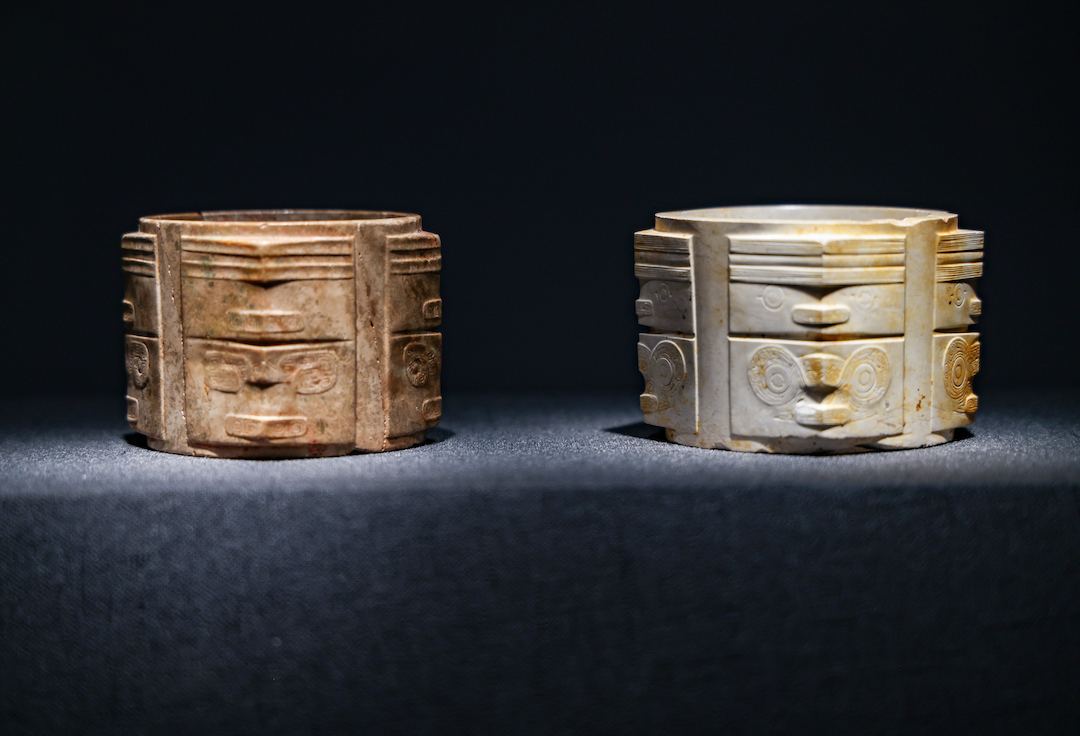
Jade Cong from the Western Zhou Dynasty on the left; Jade Cong from Liangzhu on the right
Confucius said, "Zhou was supervised by the second generation, and he was so melancholy and literary. I follow Zhou." He meant that the etiquette system of the Zhou Dynasty was borrowed from the Xia and Shang generations, so it benefited the Xia and Shang generations in terms of culture and system. Harmful and beneficial. This is also reflected in jade. Although many of the jade wares exhibited this time were unearthed from the cemetery of the Marquis of Jin or the tombs of other nobles, quite a few of them are jade wares from the previous dynasty, and there are even jade wares from the earlier Neolithic Age, which shows that the jade wares were The degree of cherishment in the minds of the people of the country. For example, we borrowed a jade cong this time, which was excavated from Tomb No. 8 in the Marquis of Jin Cemetery and is now in the collection of the Shanxi Institute of Archeology. People with archaeological experience think that it should be a jade cong from the Liangzhu culture period. However, the decorations and god face patterns on the jade cong are quite different from those of the Liangzhu period. For this exhibition, we display the cong from the Liangzhu Culture and the cong unearthed from the Jinhou cemetery side by side for comparison and display. The two are also very similar in shape. A few days ago, we tested the mineral composition of the jade cong through spectroscopy, and concluded that it is the same as the jade material composition of Liangzhu. It is certain that it is a jade cong from the Liangzhu culture, but it was partially destroyed in the Shang Dynasty or Western Zhou Dynasty. After processing, its patterns have also been re-drawn. I have always joked that the fact that the two jade congs can be displayed side by side this time is the reunion of brothers who have been separated for thousands of years. Although his skin color and wrinkles on his face are not the same, they should still belong to the same family.
The Paper: Jade cong is one of the most important archaeological finds of the Liangzhu culture. In the past, we often compared the Liangzhu jade wares with the Hongshan culture jade wares of the Neolithic Age. This exhibition presents Liangzhu jade wares. What are the academic connections between the culture and the jade culture of the Western Zhou Dynasty?
Xu Tianjin: A large number of jade cong and jade bi were found in the Liangzhu cultural site, and there are also a large number of jade bi in the tombs of the Western Zhou Dynasty. Therefore, in this exhibition, we also put the jade cong and jade bi of the Western Zhou and Liangzhu periods together in the same booth. Comparative display.
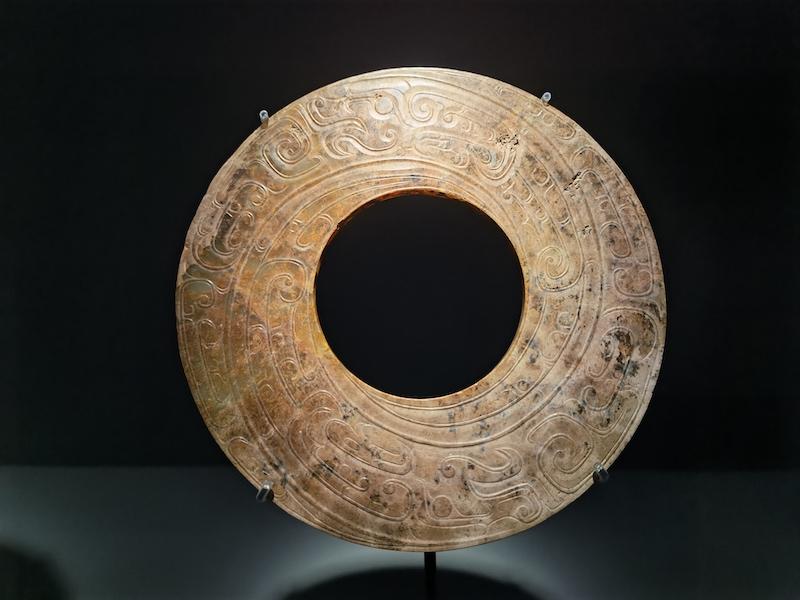
exhibition site
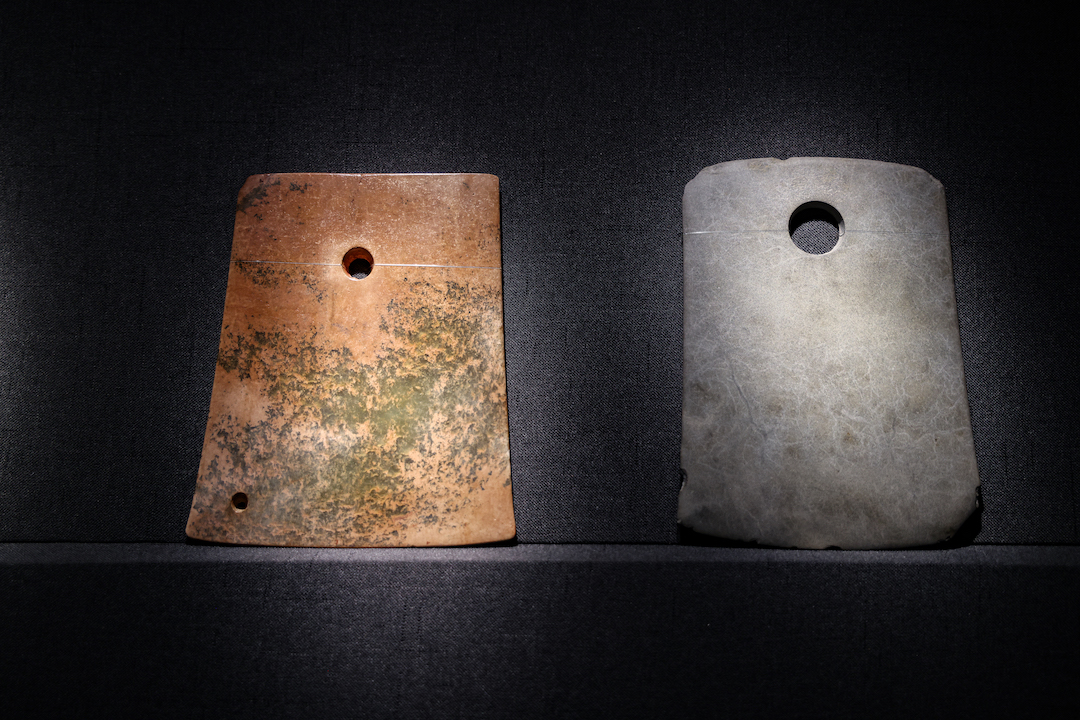
Left Western Zhou jade axe; right Liangzhu jade axe
Tracing back to the source, shapes like jade cong and jade bi can be traced back to Liangzhu. This is also the reason why we put Cong and Bi in a more eye-catching and important position in the part of "Jade of Ceremony". There are more than 2,000 years between the upper and the middle, but the spread of this culture can still see the faint connection between them today. This is also the more interesting place.

exhibition site
The Paper: Could you introduce the curatorial thinking of this exhibition, and what other highlights will be presented? Does the exhibition make any new interpretations of the jade wares of the Jin Dynasty and the jade culture of the Western Zhou Dynasty?
Xu Tianjin: The more than 170 pieces (groups) of exquisite cultural relics we exhibited this time are mainly jade wares, and there are also a small amount of bronze wares and gold wares. Most of the exhibits come from the cemetery of the Marquis of Jin in Quwo, Shanxi Province, and a small part is composed of Quwo Yangtong, Yicheng Dahekou, Jiangxian Hengshui, Hongdong Yongning Fort, Licheng Xiguan, Wenxi Shangguo, and Houma Xigao. 8 ruins were unearthed. It is hoped that through this exhibition, the general public can learn about the basic features of jade culture in this period, from the points to the surface and from the small to the big.
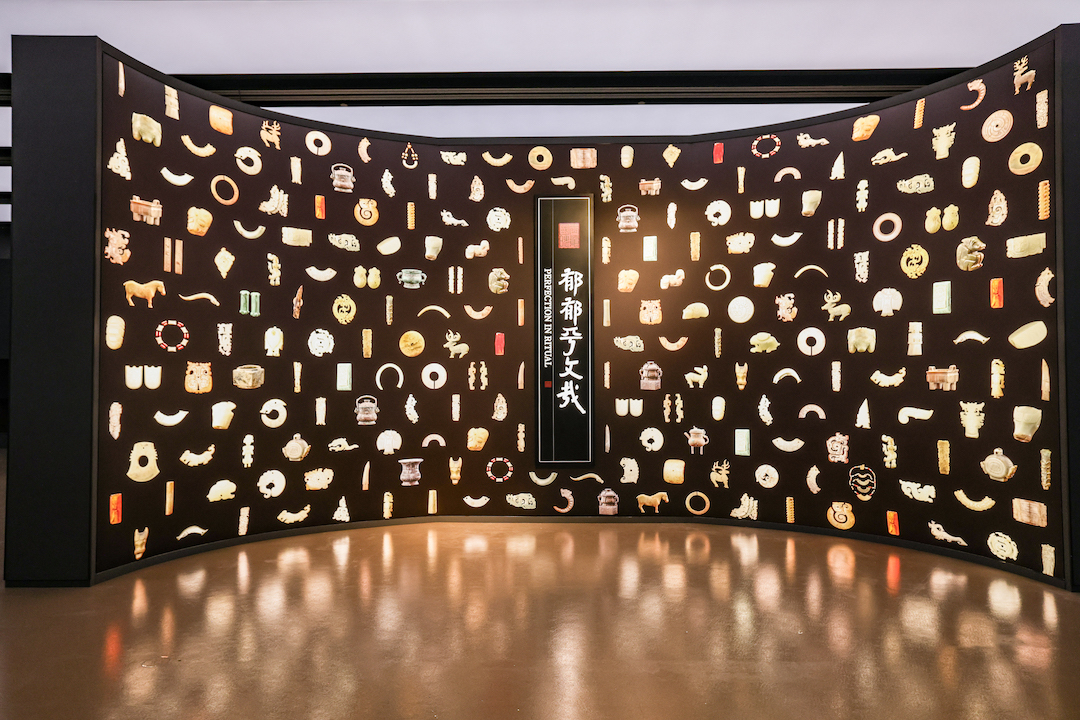
exhibition site
There are many angles that can be interpreted through jade, such as jade material, craft characteristics, cultural system, relationship with etiquette, etc. These angles have also been involved in some jade exhibitions in the past. I think previous exhibitions talked more about the historical value of jade wares. In the archaeological exhibitions during the Shang and Zhou dynasties, only the artistic value of artifacts was mentioned less. This time we want to weaken other points and highlight the beauty of cultural relics. Through this exhibition, the audience can remember the beauty of the jade wares of the Western Zhou Dynasty, and the purpose of our exhibition has been achieved.

exhibition site
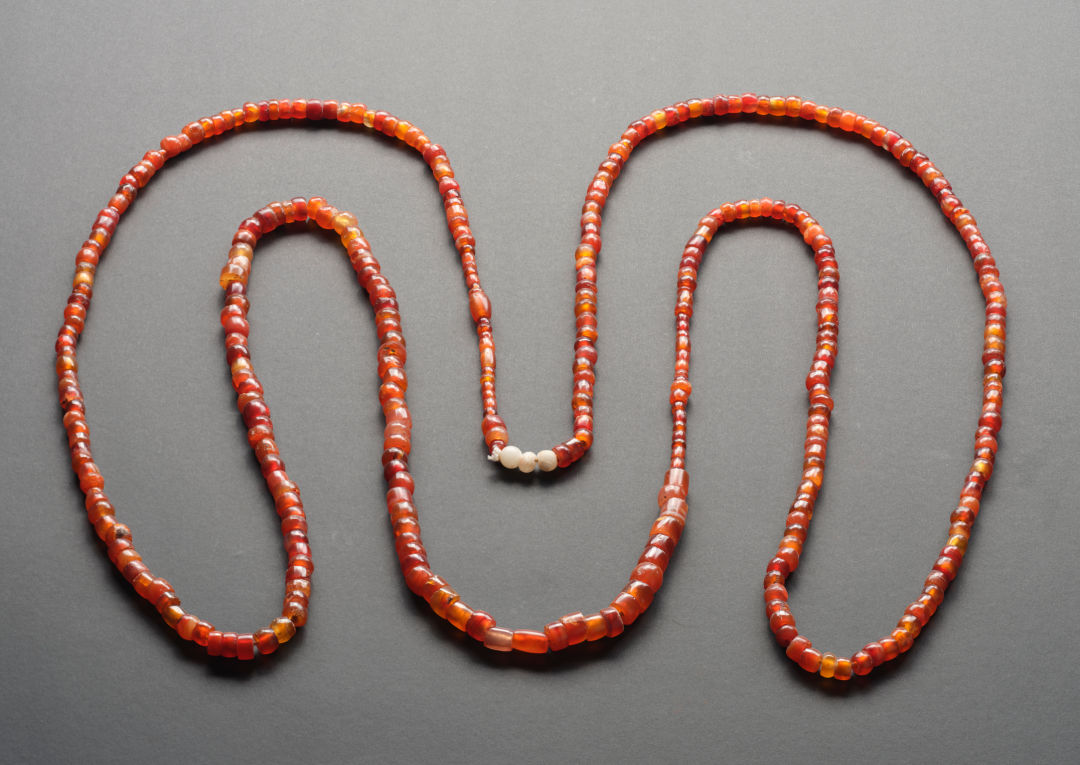
Yongningbao M14: 18 red agate charms Shanxi Provincial Institute of Archaeology (Shanxi Archaeological Museum) has a total of 381 pieces, including 3 jade beads.
The exhibition is mainly divided into two parts. The first part, "The Beauty of Jade", starts from the artistic characteristics of jade wares and presents the gorgeous colors, changeable shapes and gorgeous decorations of Western Zhou jade wares. "The Beauty of Jade" is divided into three sub-units. The first unit "Brilliant Linlang" presents the gorgeous colors of Western Zhou jades, which are presented with different colors of jade, including red agate and malachite... For this reason, we also specially borrowed an exhibition A group of gold ornaments of the same period reflects the color matching relationship of jade.
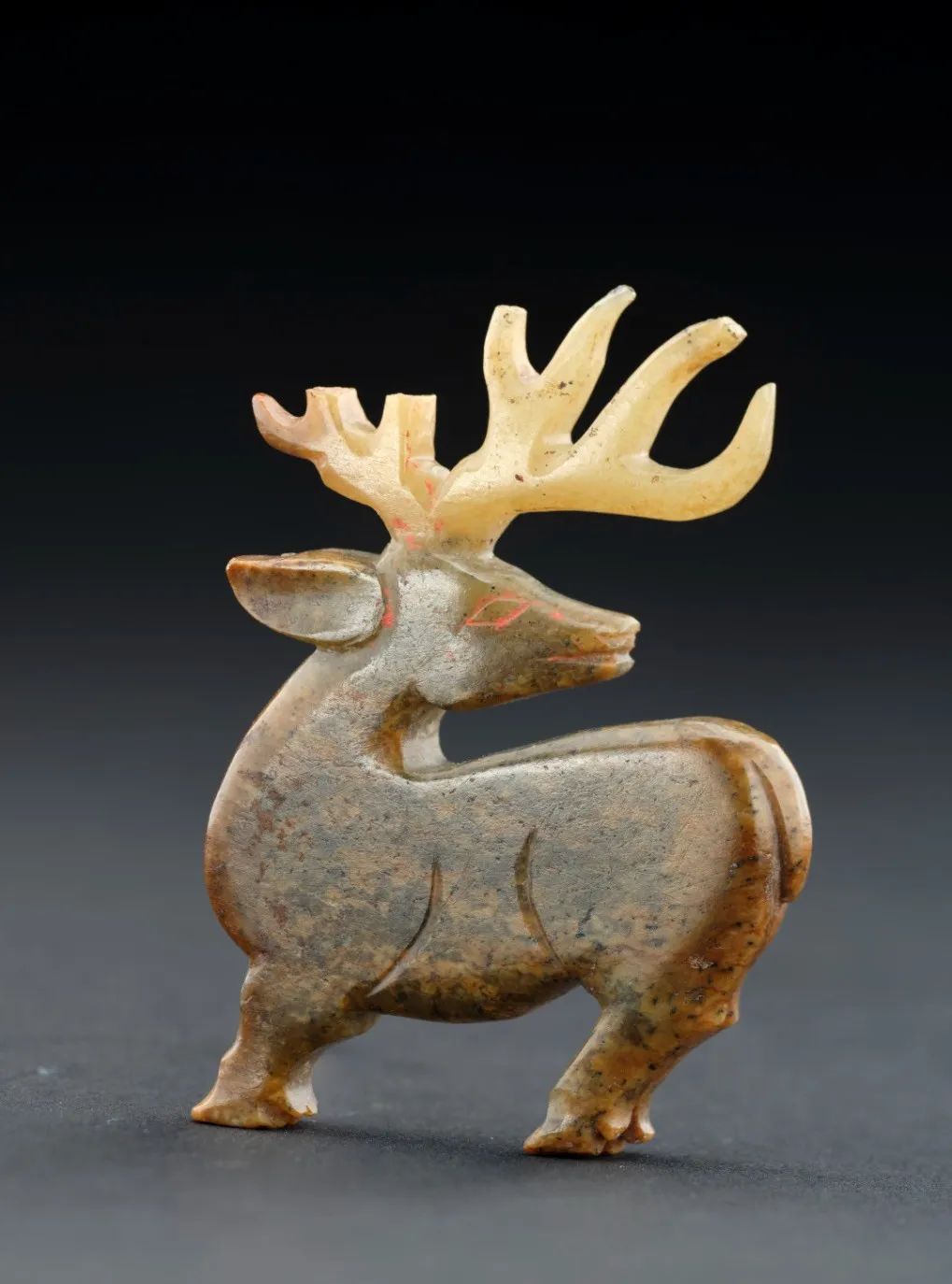
Jade article in this exhibition Sheep Tongue M2: 33 Jade Deer
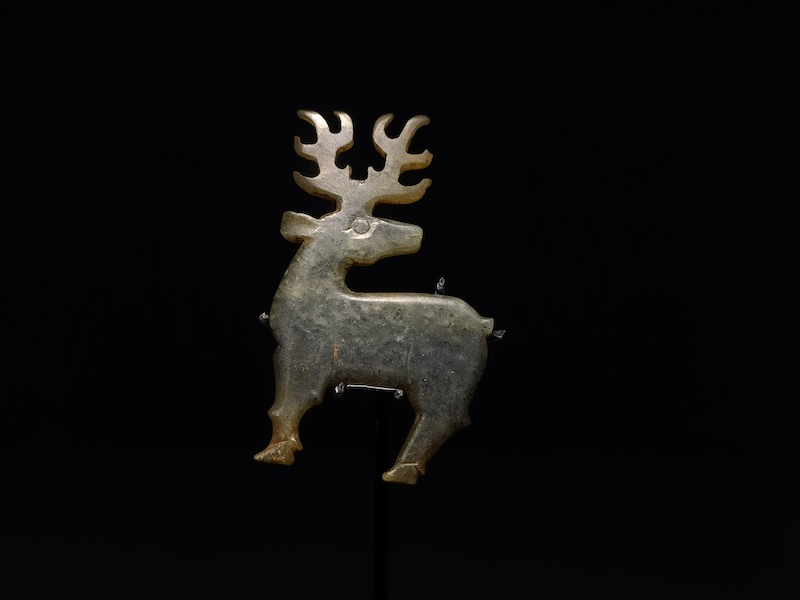
jade deer
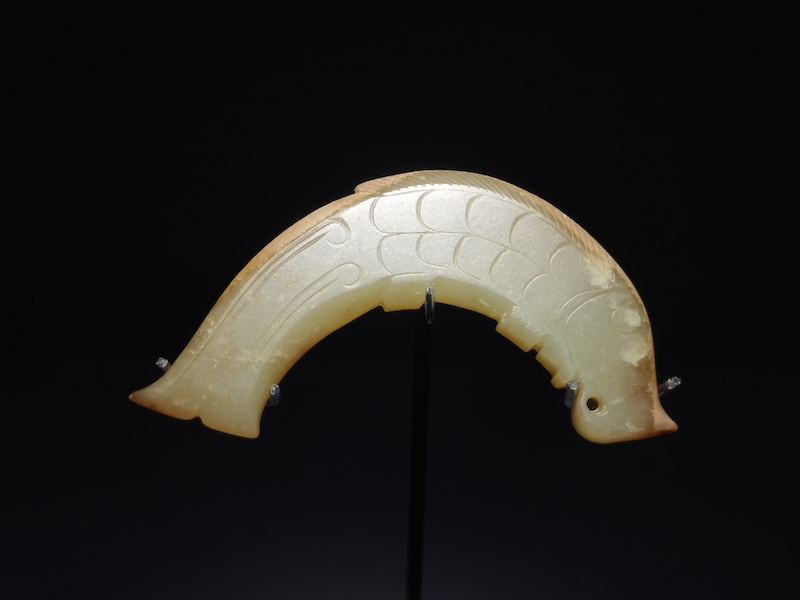
jade fish
The second unit "Looking Appreciative" shows the changeable shapes of jade wares, and exhibits a particularly rich variety of animal shapes, such as fish, cows, deer, rabbits, tortoises, and cicadas... Next year is the year of the rabbit, and jade wares in the shape of small rabbits are specially borrowed. The third unit talks about jade decorations, such as the most common dragon and phoenix patterns on Western Zhou jade wares. The gorgeous decorations of jade wares are presented through different depictions of dragon and phoenix patterns on jade wares of different geometric shapes.

exhibition site
The second part, "Jade of Ceremony", starts from the functional system of jade wares, and narrates the inheritance, innovation and material extension of the jade ritual system in the Western Zhou Dynasty by category. In addition to the jade cong unearthed from the tomb of the Marquis of Jin just mentioned, there are also jade cong from the Qi family culture system, and copper-cast imitation cong-shaped containers, etc., showing the evolution of the cong type in later generations and its influence on later generations .

North Zhao M63: 110-111, 113-114, 62 Yu Ge group photo
This time, the "Jade Ge" remade from the old jade of the previous life will also be presented, and a certain number of "human-dragon jade carvings" will be exhibited together... There is also a group of very special exhibits from Tomb No. 63 in the Muhou Cemetery of Jin Dynasty. More than 800 pieces of jade were unearthed from the tomb of the "Second Wife" of Marquis Jin, which surpassed that of her husband. One of the small copper boxes, which has decayed, contains more than 30 small jade wares, nearly half of which are remnants of jade wares from the Shang Dynasty. They are exquisite in terms of materials, shapes, and carving techniques. We have borrowed more than 20 of them, hoping to let everyone see the ancient people's love for jade.

exhibition site
Because each era has its own artistic style, in order to let everyone better understand the artistic style of the Western Zhou Dynasty, we also borrowed 5 bronze wares from the Western Zhou Dynasty. What they have in common is that they all have phoenix and bird patterns on their bodies. Through the performance of phoenix and bird patterns on different utensils, we can have a comprehensive understanding of the art style of this era.
We have also adopted a very novel format for this exhibition. For example, in our exhibition hall, except for the simple preface, there is no text in other areas, and the background of the exhibition hall is also very clean. We hope to create a particularly quiet space, so that the audience can Focusing the sight directly on the exhibit itself without being disturbed by other factors, we hope that the audience can feel and experience something through their own observation.

exhibition site
There is no conclusion to this exhibition. At the end of the exhibition, we listed more than 20 articles related to the content, which we call recommended reading. If interested audiences are really interested in the exhibition, they can find these books and articles for in-depth interpretation.

exhibition site
For this exhibition, we did not rack our brains to tell various stories of cultural relics. It may take some labor for the audience to understand this exhibition. We just made some guidance, thinking about how to let the audience learn to see the exhibition by themselves, Put aside the instilled knowledge input and try a higher-level learning method.
